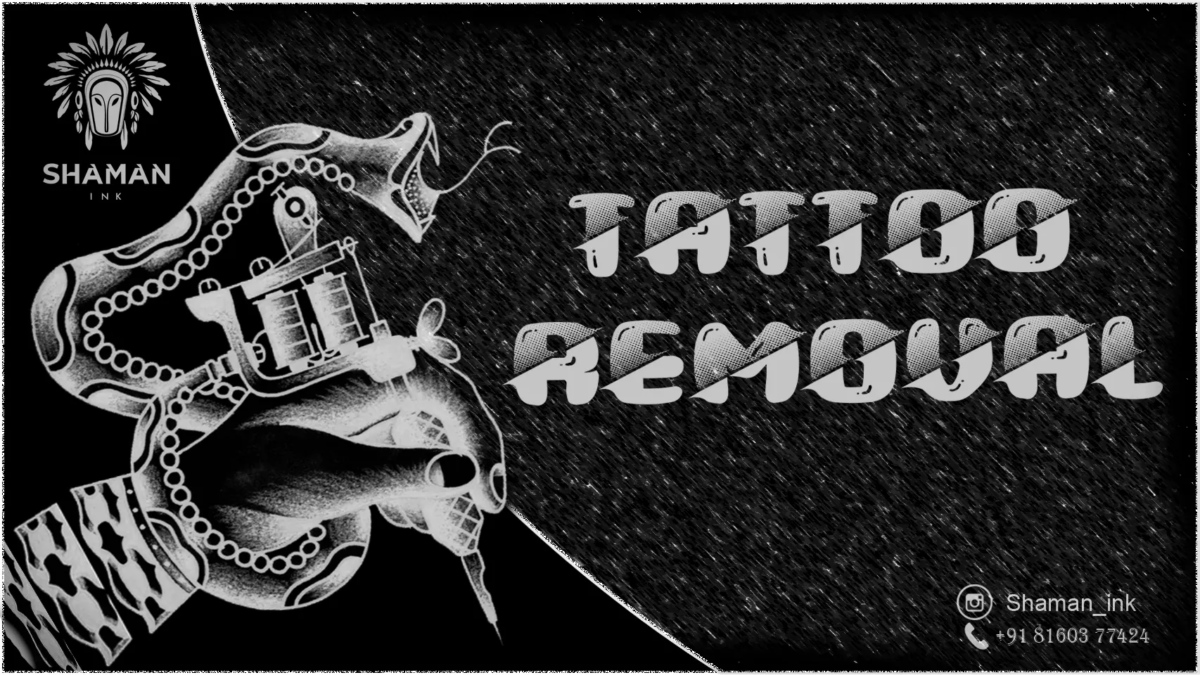Table of Contents
Introduction
In recent years, tattoo removal has advanced significantly, providing people with a range of secure and efficient ways to remove unwanted ink. Whether you want to lighten a tattoo for a cover-up or erase it entirely, it’s important to know what to expect from the procedure and the current options available. We’ll go over the most widely used tattoo removal methods in this article, along with their advantages, possible drawbacks, and what to expect along the way.
Tattoo Removal Methods
Laser Tattoo Removal
Among these techniques, laser tattoo removal is the most popular and successful. High-intensity laser beams are used in the process to disintegrate the ink particles in the skin. After that, the immune system of the body progressively absorbs and gets rid of these particles.
Benefits:
- It works well on the majority of skin tones and ink colors.
- Minimal possibility of scarring.
- Non-invasive and heals quite quickly.
Consideration:
- Usually, multiple sessions are needed.
- Some soreness both during and following the procedure.
- Possible short-term adverse effects include blistering, edema, and redness.
Intense Pulsed Light (IPL) Therapy
Broad-spectrum light is used in IPL therapy to specifically target and degrade the ink particles. Though it can cover larger amounts of skin in a single session, it works similarly to laser removal.
Benefits:
- Works well on larger tattoos.
- less agonizing than standard laser procedures.
Consideration:
- Less effective on skin tones that are darker.
- Usually more costly than laser excision.
- For total eradication, several treatments are required.
Surgical Removal
Cutting away the tattooed skin and sewing the remaining skin back together is known as surgical excision. Smaller tattoos work well with this technique.
Benefits:
- Total elimination in a single session.
- efficient for little, straightforward tattoos.
Consideration:
- It is inevitable to get scars.
- Not appropriate for extensive tattoos.
- need recovery time and local anesthesia.
Dermabrasion
In order to remove the top layers of skin where the ink is present, dermabrasion entails sanding the skin down. Because of how intrusive this procedure is, it is used less frequently.
Benefits:
- When applied to superficial tattoos, it may work.
- Fits all types of skin.
Consideration:
- painful and necessitates a protracted healing time.
- Increased chance of infection and scarring.
- less accurate than laser hair removal.
What should you expect while getting a tattoo removal?
Consultation
You’ll meet with an expert to discuss your tattoo and skin type before beginning any removal procedure. They will offer a treatment plan and suggest the best course of action for your particular situation.
Treatment Sessions
The size, color, and age of your tattoo, along with the type of skin you have, will all determine how many sessions are needed. Treatments using lasers and IPL usually require 6–12 sessions spread out over several weeks.
Pain Management
Removing a tattoo can be painful; it’s frequently compared to acquiring one. In order to reduce discomfort during the surgery, numb lotions or local anesthesia can be used.
Aftercare
In order to maximize benefits and reduce adverse effects, proper aftercare is essential. This could entail using creams, shielding and cleaning the region, and avoiding direct sunlight.
Side Effects and Healing
Redness, swelling, burning, and transient skin color changes are typical adverse effects. Usually, these disappear after a couple of days or weeks. It may take several months to get full healing and desired outcomes.
Frequently Asked Questions (FAQs)
Q. What is the most effective method for tattoo removal?
A. The most effective method for tattoo removal is generally laser tattoo removal. It is popular due to its ability to target various ink colors and skin tones with minimal scarring.
Q. Is tattoo removal painful?
A. Yes, tattoo removal can be painful. The sensation is often compared to getting a tattoo. However, numbing creams or local anesthesia can be used to minimize discomfort during the procedure.
Q. How long does it take to heal after tattoo removal?
A. Healing time varies depending on the method used and individual factors. Side effects like redness and swelling typically resolve in a few days to weeks, but complete healing and desired results may take several months.
Q. Can I completely remove my tattoo?
A. While many tattoos can be significantly faded or completely removed, results vary based on factors like tattoo size, ink color, and skin type. Consulting with a skilled specialist will provide the best guidance for your specific situation
Q. Will I have scars after tattoo removal?
A. Modern tattoo removal methods like laser removal have a minimal risk of scarring. However, methods like surgical removal and dermabrasion have a higher risk of leaving scars.
Conclusion
Tattoo removal has come a long way, with a variety of techniques to suit various requirements and tastes. Whether you choose dermabrasion, IPL therapy, laser removal, or surgical removal, it’s critical to comprehend the procedure and have reasonable expectations. You can have the best experience with tattoo removal if you speak with and heed the advice of a skilled specialist.
If you’re thinking about getting rid of a tattoo, do your homework and select the procedure that best fits your needs. You can successfully fade or erase your tattoo and have clear, ink-free skin again with the correct method.

